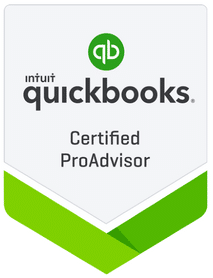- Patrick Roney
- (877) 503-8607
Follow Us :
Follow Us :
Proledge
June 17, 2011

Let’s assume that you are 6 months behind with QuickBooks. You haven’t entered all the data. You haven’t reconciled the bank accounts. Your A/P and A/R are not representative of your current situation. What do you do? You have two options: #1 Catch up on the legacy work, or #2 focus on getting things right from today going forward and catch up on legacy work later. Surprisingly enough, catching up right away might not always be the best option.
The first step is to decide what your goals are. QuickBooks typically has two key functions:
If your goal is just to have a set of books to give to your CPA to file taxes, it’s clear that all you need to do is catch up with the legacy work. Your schedule is only dictated by the tax deadlines. However, if you want to lean on QuickBooks to run your business on a day-to-day basis, then you have a more delicate decision to make.
Let’s take an extreme example to illustrate the trade-offs. Every so often, we have clients who come to us who are 2 years behind with their books. They filed their taxes with some rough estimates, but they want things to get caught up in a more precise manner, even at the price of having to file amendments to their taxes. With such clients, we usually sit down with them or their CPA and ask them what their goals are. If having an up-to-date tool to run their business with is an important priority, we put a plan in place that will first set them on the right track from today, onward. We agree to disregard legacy work for now and that we’ll fix the old data at a later stage. To do this, we pick a date from which we want things to be clean, going forward: 1st of the current month, 1st of the current fiscal year, whatever the client feels more comfortable with. On that date (“Day One”), we take a complete snapshot of where the company stands:
At that point, we create a massive journal entry to adjust the balance sheet on Day One and we force a reconciliation of all the bank accounts through Day One. The end result is that we now trust our balance sheet, P&L and reconciliations from Day One going forward. Nothing before Day One can be trusted at this point. It’s likely to be completely off.
The client then starts using QuickBooks on a day-today basis with rigor: keeping up with A/P, A/R and reconciliations, etc… Once the client gets her rhythm, then and only then, it’s time to look back at the legacy work and start the clean-up. As we get progressively caught up, we modify the Day One adjusting journal entry to reflect the changes we made prior to Day One. Once we’re completely caught up, the Day One adjusting journal entry should be completely gone and you now can trust the P&L and Balance sheet for the periods before Day One.
This process makes sense if you are really far behind. However, this approach comes with serious overhead. It’s not an easy task to cleanup legacy work and modify the Day One adjusting entry in parallel.
If you’re only one or two months behind, don’t take this approach. Simply get caught up the traditional way. The challenge is when you fall between the two extremes that I described above: 1 month behind vs. 2 years behind. It then all depends on your priorities and your bookkeeping skills. Catching up chronologically is always simpler from a process stand-point, but it’s not always the right answer, because, while your focus is on the old periods, you might be introducing more problems in your current periods.


Fill out the form below to sign up to our Blog Newsletter and we’ll drop you a line when new articles come up.
Bookkeepers.
Professional. Affordable.
ProLedge is a bookkeeping services firm.
Copyright © 2024 All rights reserved.
Hello. Can we help you?